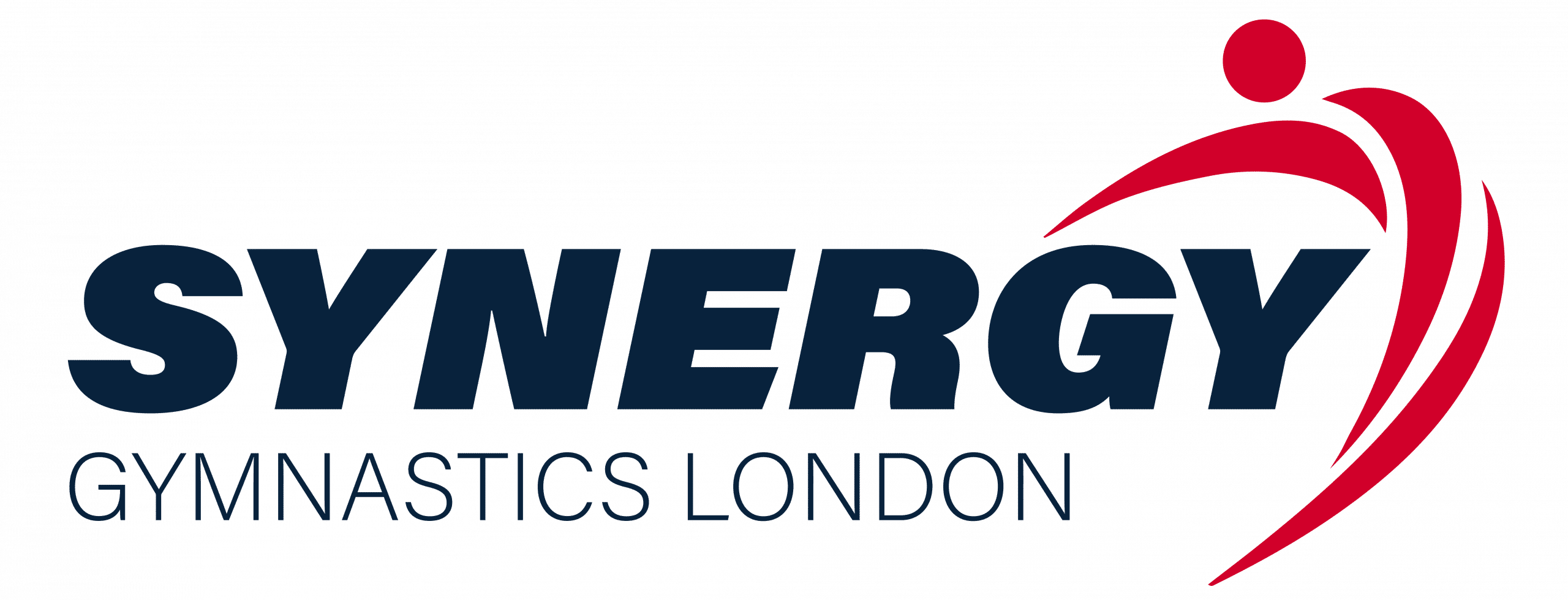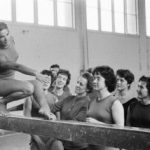What is an aerial in gymnastics? It’s a skill that is described as a Cartwheel with no hands touching the floor. It involves a powerful leg drive to lift the body off the ground, timed rotation in the air, and control upon landing.
Aerials are an advanced skill and demonstrate a gymnast’s coordination, flexibility, power and body awareness.
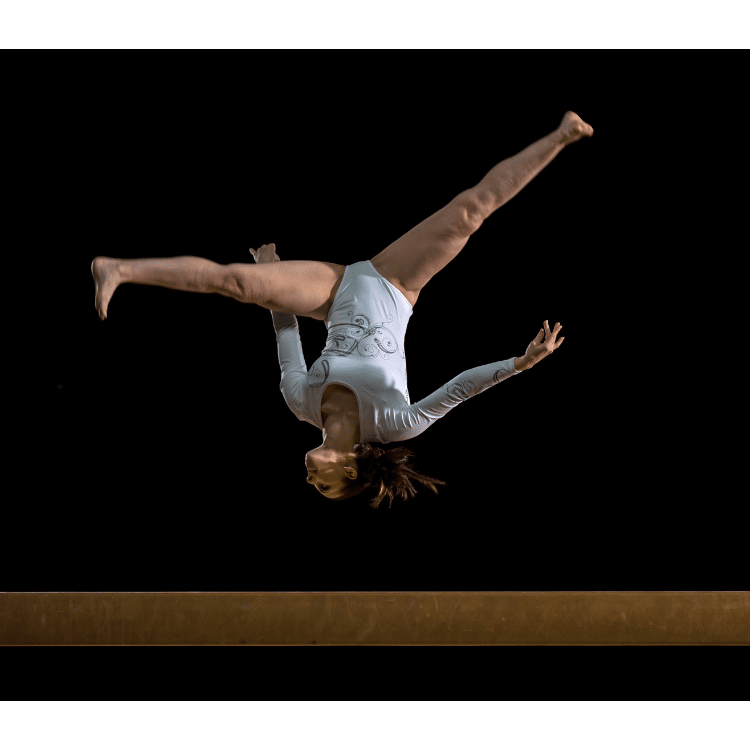
When Are Aerials Used in Gymnastics?
Aerials are most commonly performed on floor exercise routines. They are frequently used as passé elements between tumbling lines. Aerials can add difficulty, variety and artistry to floor routines.
Gymnasts may also incorporate aerial skills on the balance beam. Aerials help the gymnast change direction smoothly on the narrow beam.
How to do an Aerial
Here are step-by-step instructions on how to perform a cartwheel aerial:
Disclaimer: This information is intended as general information and does not replace the need for professional guidance from a qualified coach in a safe training environment.
1. Hit the lunge position
Stand with feet shoulder-width apart, one foot forward and one foot back in a lunge. Engage your core and shift your weight slightly forward. Add a short run-up before the lunge to generate power and momentum.
2. Initiate the cartwheel
Swing your back leg whilst reaching forward with your arms just as you would in a cartwheel. The leading leg will launch you into the aerial.
3. Push off the floor
As your rear leg nears vertical, push forcefully off the floor with your leading leg. You need to generate enough power to keep you in the air whilst the legs rotate over your head. Use your arms and shoulders to help drive up.
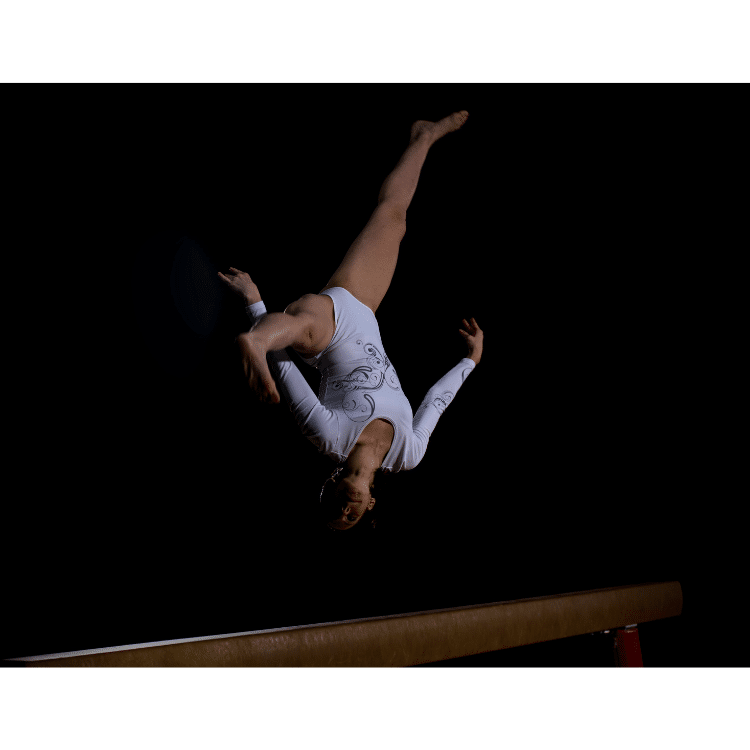
4. Lift hips skyward
Thrust your hips upwards while keeping your upper body straight. Fully extend through your hips, into a star shape just as you would with a cartwheel. Keep your arms stretched out and away from your body.
5. Spot the floor
Keep your head neutral and your eyes focused on the floor throughout the skill. Spotting helps control rotation.
6. Land on two feet
Allow your momentum to bring your legs back underneath you. The rear leg that swung up first should land first.
- If you lead into the aerial with your left leg first, your right leg will land first.
- If you lead into the aerial with your right leg, your left leg will land first.
There is no correct or incorrect leg to lead with. Everyone naturally has a dominant leg that leads into cartwheels, handstands, aerials etc. Use whichever feels natural to you.
Progressions for Aerial Cartwheel
When teaching an Aerial, coaches will often use rebound equipment such as a Trampoline, Springboard or inflatable Air Mat. This gives an increased amount of air time in which to perfect technique, form and spacial awareness. It also allows for more repetition before exhaustion kicks in.
Another common type of progression involves using a platform on which the Cartwheel or Aerial is performed. The gymnast takes off from the end and finishes down onto a landing mat. The platform can be anywhere between 30cm – 60cm from the ground and also allows more time in the air. We often use spotting blocks in our gym as platforms with landing mats below the platform.
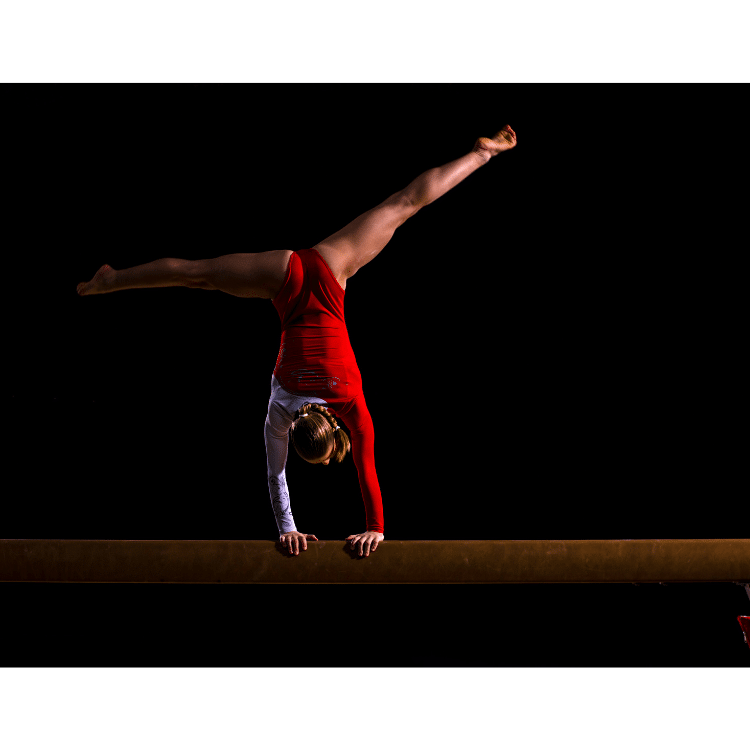
Once the skill has been mastered on rebound equipment or from a platform it can be transferred onto the floor. The process is the same for a balance beam – start on a line on the floor, then move onto a low beam and then eventually a full-sized balance beam.
How to Perform a One-Hand Cartwheel
A One Hand Cartwheel is an excellent progression for Aerial Cartwheel as it is very similar in technique but the aid of one hand touching the floor makes it less challenging.
1. Prepare in lunge
Set up in a lunge position just like a two-hand cartwheel. Engage your core and shift slightly forward.
2. Kick into cartwheel
Swing your rear leg and arm up as you kick the front leg out to the side. Place one hand on the floor under your shoulders.
3. Non-dominant hand
The hand not being placed on the floor should press into the side of the body near the hips. The other hand remains planted on the floor.
4. Drive hips skyward
Push forcefully off the floor, using your legs and supporting arm. Thrust your hips upwards, reaching for the sky.
5. Spot the floor
Keep your head in a neutral position, eyes focused on the spot. Maintain tight core engagement throughout the inversion.
6. Land on two feet
Let your momentum bring your legs underneath your body. Land softly on two feet, one foot at a time absorbing the impact through your legs. The leg which lands first should have been the rear leg that drove up first.
One-hand cartwheel aerials require extra shoulder strength and body tension. Go back to two hands if you have trouble performing the one-hand cartwheel or use rebound equipment or a platform.
Common Aerial Faults and How to Fix Them
Mastering aerials takes time and practice. Be patient through the learning process. Here are some common faults and tips to fix them:
Piking at the hips – This causes the aerial to look bent rather than straight. Focus on thrusting your hips upwards and for your legs to travel over your head and not in front.
Under rotation – If you don’t fully rotate upside down, it prevents proper aerial form. Generate power from your legs and swing arms aggressively upwards.
Fear – If you are really worried about performing the aerial, there is a big temptation to place a hand on the floor. If it keeps happening, go back a step to one-hand cartwheels or go back onto rebound equipment to help build your confidence.
Spotting issues – Lack of spotting causes control problems upon landing. Keep your eyes focused on one spot throughout the skill. Spotting takes practice so be patient.
Landing off balance – Sticking the landing requires control. Absorb landing forces through your entire foot, not just the toes. Land with knees bent to help absorb shock.
Aerials require strength, body control, coordination and practice. Break the skill down into progressions. Master each phase and then connect them together. Perfection takes time and patience.
Conclusion
In summary, to answer what is an aerial in gymnastics, it is an impressive gymnastics skill that lifts the body into the air in the same way a cartwheel does. They require whole-body coordination and demonstrate a gymnast’s leg power and core control. Aerials are commonly performed on floor exercise and balance beam routines. Cartwheels are an introductory skill for learning aerial fundamentals. Patience and proper progressions will help gymnasts successfully master beautiful aerials.
If learning how to do an aerial sounds exciting, sign up for a free trial to one of our classes here.
FAQs
Is an aerial a flip?
An aerial can be considered as a flip as the body goes inverted and rotates in the air. It is very similar to a sideways somersault.
How hard is an aerial cartwheel?
An aerial cartwheel is very hard. It takes a good amount of strength, flexibility and confidence to perform it well. Elite gymnasts often use an Aerial on the floor or in balance beam routines.
Do you need to be flexible to do an aerial?
You need to be able to hit a star shape at the hips and legs however this is fairly straightforward and if you can perform a cartwheel then you have enough flexibility to perform an aerial.
Can a beginner do an aerial?
No, it’s very unlikely a complete beginner can do an aerial. Most people will need to work through the progressions of cartwheel, one hand cartwheel and build up strength and body tension before they can do an aerial.
- Find The Best Leotard For Girls (Guide)Finding an ideal leotard for girls isn’t just about picking a dazzling design that sparkles (although it does help!). The leotard has to fit perfectly,… Read more: Find The Best Leotard For Girls (Guide)
- The Best Gymnastics Shorts (Our Top Picks)The best gymnastics shorts are designed to be worn over the top of a leotard providing additional coverage around the upper legs, whilst allowing gymnasts… Read more: The Best Gymnastics Shorts (Our Top Picks)
- Decathlon Leotards – Are They Any Good?If you’re in the market for a new leotard, you may be wondering if Decathlon leotards are any good considering the low cost of their… Read more: Decathlon Leotards – Are They Any Good?
- A Complete Guide to Gymnastics Hand RipsAre you tired of dealing with painful gymnastics rips on your hands from training? Look no further – this article offers a comprehensive approach to… Read more: A Complete Guide to Gymnastics Hand Rips
- Is Gymnastics Dangerous? (Facts and Comparisons)Gymnastics is acknowledged as a highly technical and physically demanding sport. It inherently carries a risk of injury, which is why most coaches and clubs… Read more: Is Gymnastics Dangerous? (Facts and Comparisons)
- The Fascinating Evolution of GymnasticsGymnastics is a sport that has been around for centuries and has evolved significantly throughout history. From its origins in ancient Greece to the modern-day… Read more: The Fascinating Evolution of Gymnastics
